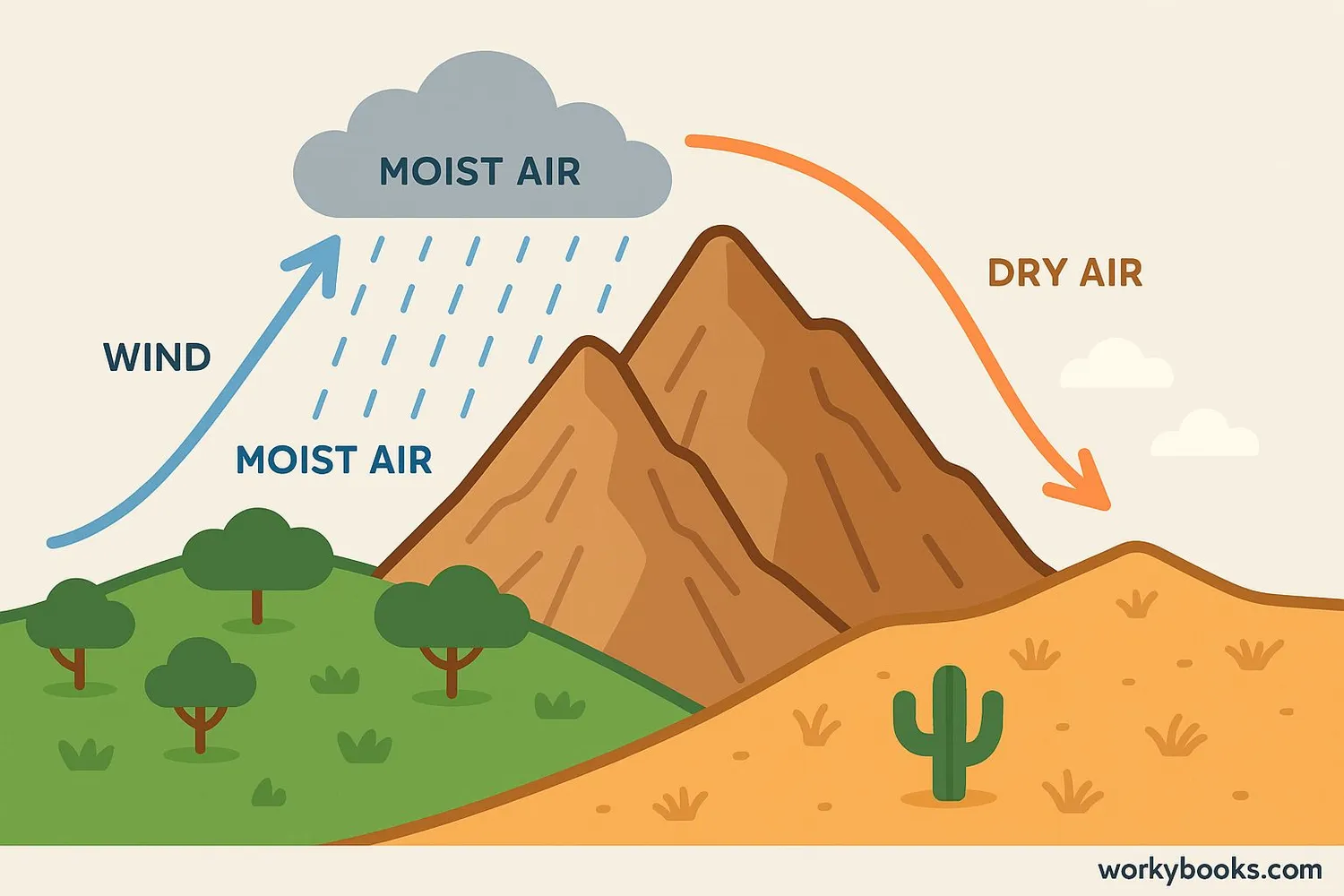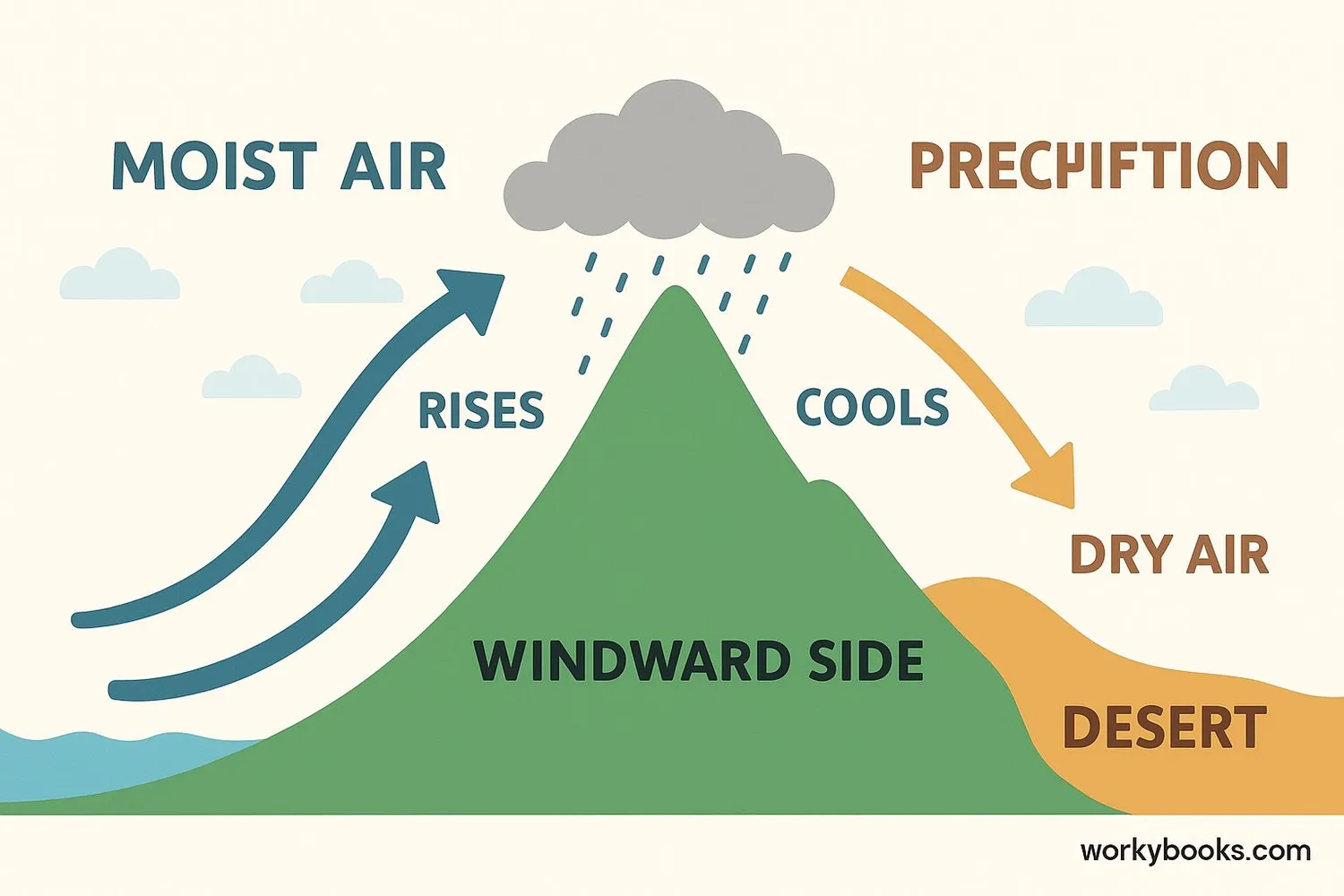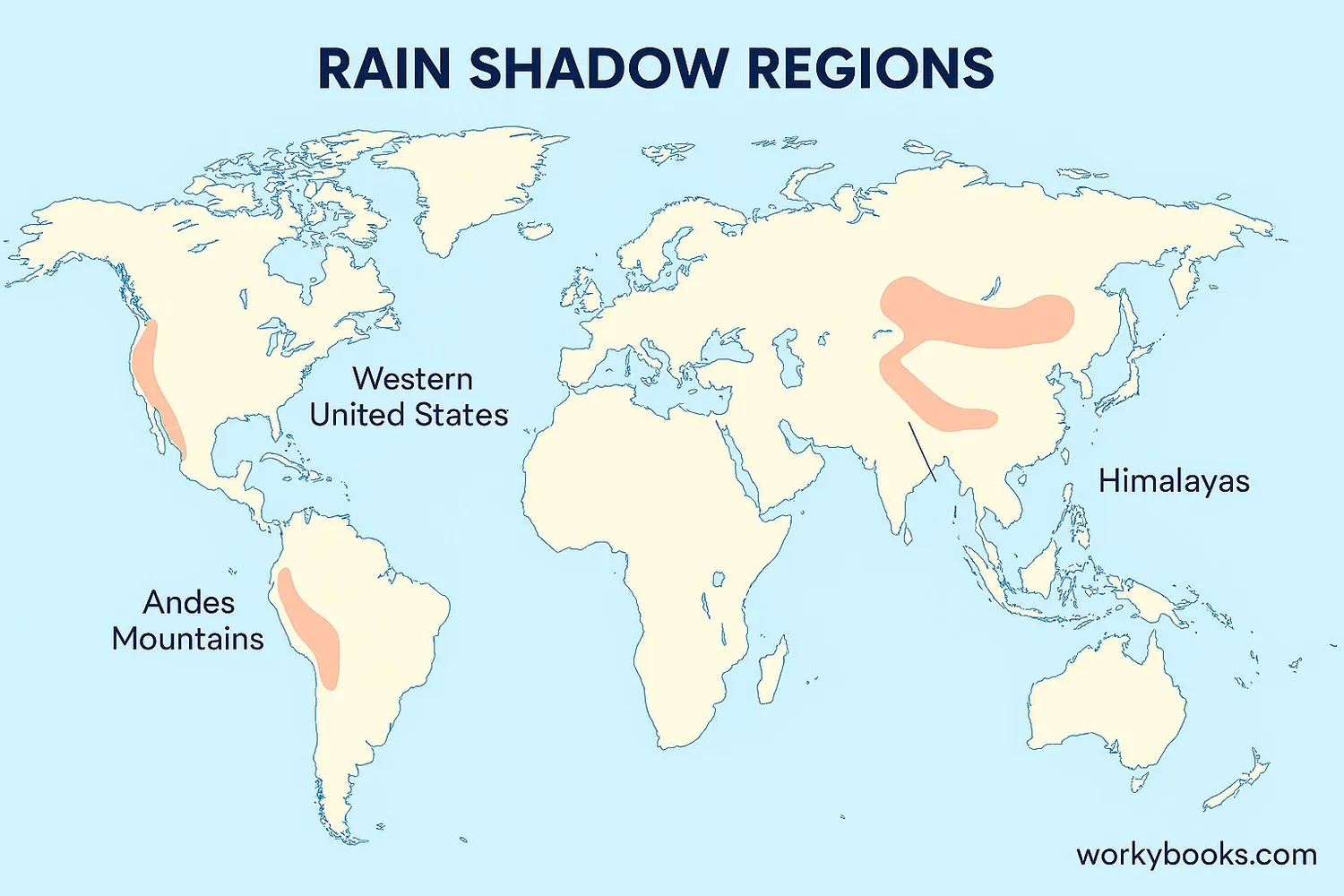The Rain Shadow Effect - Definition, Examples, Quiz, FAQ, Trivia
Discover how mountains create deserts on one side and rainforests on the other
What is the Rain Shadow Effect?

The rain shadow effect is a weather phenomenon that creates dry areas on the downwind side of mountains. It explains why one side of a mountain range might be lush and green while the other side is dry and desert-like.
Think of mountains as giant barriers that block rain clouds. When moist air from the ocean hits a mountain range, it's forced to rise up the mountain slopes. As the air rises, it cools down and releases its moisture as rain or snow on the windward side (the side facing the wind). By the time the air crosses over to the other side (the leeward side), it has lost most of its moisture, creating a "rain shadow" where very little rain falls.
Weather Fact!
The rain shadow effect is responsible for some of the world's most famous deserts, including the Atacama Desert in Chile and Death Valley in California!
How the Rain Shadow Works

The rain shadow effect happens through a process called orographic lift. Here's how it works step by step:
Prevailing Winds
Moist air moves toward a mountain range from the ocean
Orographic Lift
Air is forced to rise up the mountain slopes
Cooling & Condensation
As air rises, it cools and water vapor condenses into clouds
Precipitation
Rain or snow falls on the windward side of the mountains
Dry Air Descends
Dry air flows down the leeward side, warming as it descends
Rain Shadow
The dry area created on the leeward side of the mountains
This process creates two very different climate zones:
Windward Side: Cool, moist, and often covered in forests or rainforests
Leeward Side: Warm, dry, and often desert-like with less vegetation
Climate Connection!
The rain shadow effect can create deserts that are just a few miles away from rainforests, depending on the mountain range!
Real-World Examples

Rain shadows exist all around the world. Here are some famous examples:
Sierra Nevada Mountains
Creates the Death Valley desert in California
Andes Mountains
Forms the Atacama Desert in Chile (the world's driest desert)
Himalayas
Creates the Gobi Desert in Mongolia and China
Example: The Cascade Mountains
In the Pacific Northwest of the United States, the Cascade Mountains create a dramatic rain shadow effect:
• Windward side (West): Receives 60-100 inches of rain annually, creating lush rainforests
• Leeward side (East): Receives only 6-20 inches of rain, creating dry shrub-steppe landscapes
This difference is why Seattle is rainy and green while just 100 miles east, Yakima has a desert climate perfect for growing apples!
Rain Shadow Knowledge Quiz
Test your understanding of the rain shadow effect with this 5-question quiz!
Frequently Asked Questions
Find answers to common questions about the rain shadow effect:
Weather Trivia
Discover fascinating facts about rain shadows and weather patterns:
Driest Place on Earth
The Atacama Desert in Chile, created by the rain shadow of the Andes, is the driest non-polar desert. Some weather stations have never recorded any rain!
Rainfall Extremes
Mount Waialeale in Hawaii receives over 450 inches of rain annually on its windward side, while just 30 miles away, areas in its rain shadow receive less than 20 inches.
Farming in Rain Shadows
Some rain shadow areas like Washington's Yakima Valley have become important agricultural regions by using irrigation to grow crops like apples, cherries, and wine grapes.
Historical Impact
Rain shadows influenced human settlement patterns. Native American tribes in the Great Basin developed different cultures and technologies to adapt to dry rain shadow environments.





